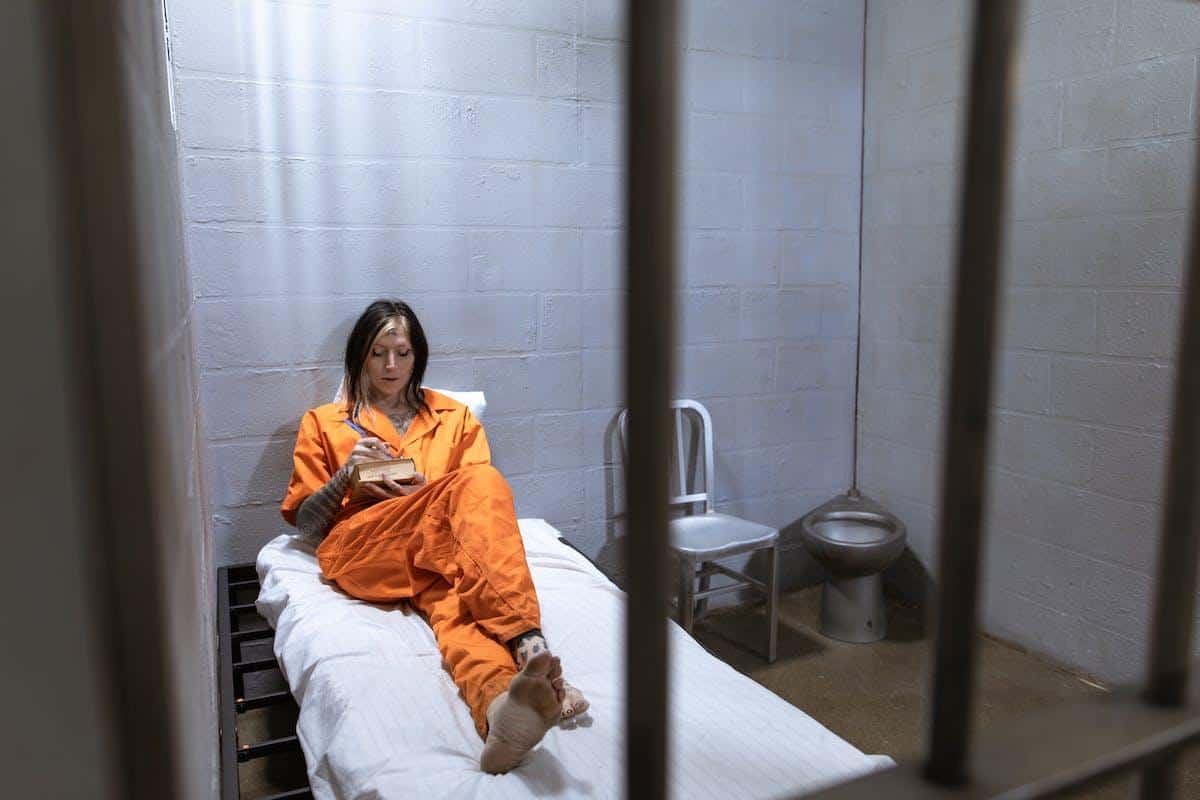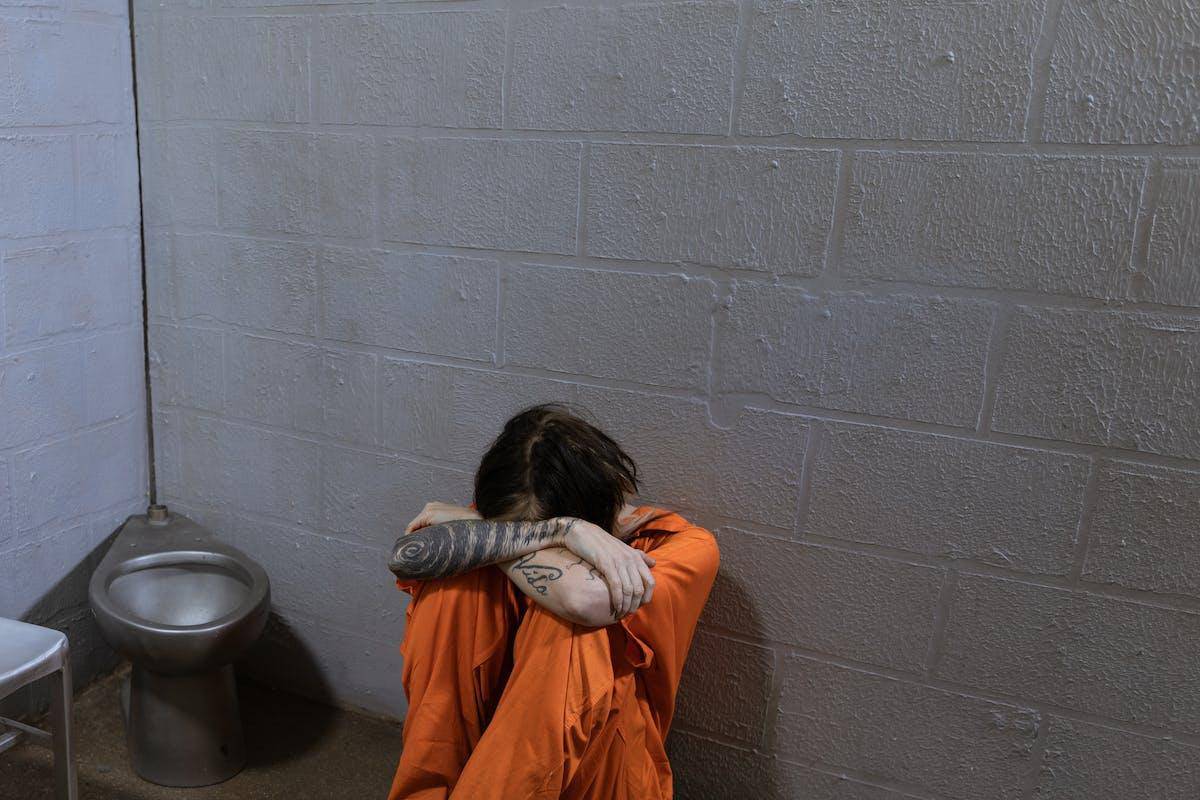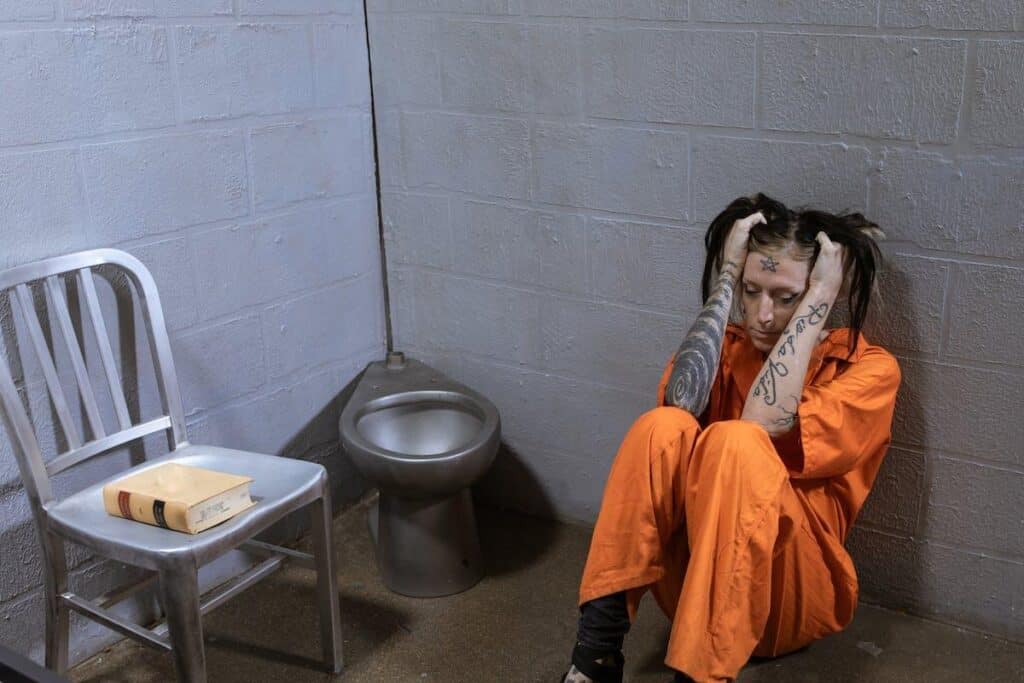In any democratic society, ensuring the protection of prisoner’s rights and humane treatment within incarceration facilities is necessary. The concept of jail oversight in Orange County CA provides a pathway towards achieving this requirement. This article will delve into the complexities and importance of jail oversight – precisely in Orange County, California (CA). It is not only an essential element within the criminal justice system but also a platform for promoting progressive reform and transparency.
For many, the term “jail oversight” might seem slightly obscure or hard to understand. Simply defined, it involves monitoring and regulating prisons’ practices to ensure they meet legal and ethical standards.
Jail oversight functions as a check on potential abuses that might occur behind bars such as instances of inmate abuse, medical neglect, or unjustified use-of-force incidents by officers. Without effective prison oversight systems, these violations can remain hidden from public scrutiny-promoting a culture of impunity among jail staff.
This article will journey through diverse topics including; delving into what necessitated the push for jail oversight historically in Orange County, identifying key players propelling its realisation, examining challenges encountered in implementing these changes and exploring strategies for its successful execution. Additionally, we aim to inspire active participation by unveiling how residents can contribute to enhancing transparency within these systems.
Lastly, we look forward at potential reforms whose adoption could significantly enhance prison administration in Orange County, CA; ultimately underscoring the overall impact of effective jail oversight on society’s well-being.
History & Need for Jail Oversight in Orange County, CA
Early Days of Jail Oversight
When considering the need for jail oversight in Orange County, CA, it’s critical to take a look at the historical context. In earlier years, local correctional facilities were primarily focused on confining those awaiting trial and those convicted of less serious crimes.
These settings sometimes lacked adequate regulations and strict monitoring to ensure inmates’ rights and safety. Incidents related to overcrowding, unfair treatment of prisoners, poor living conditions, excessive use of force by jail officers are some unfortunate experiences that dotted the early phase and triggered the call for increased regulation and monitoring of local jails.
High-Profile Controversies
The history of Orange County’s jail system has been marred by several high-profile controversies that have highlighted the urgent need for effective oversight. For instance, in 2007, an inmate death case drew significant attention when a grand jury report accused sheriff’s deputies of using repetitive force without provocation. The evidence suggested a culture of violence within the county’s jails that was deeply entrenched and mostly unaddressed.
Another paramount incident occurred in 2016 when three inmates had managed to escape from a maximum-security jail by fashioning makeshift tools, demonstrating severe breaches in security protocols. Investigations following this event revealed numerous operational issues within Orange County corrections system including lackadaisical surveillance systems and under-staffing which somewhat fueled public cries for better management.
Jail Conditions & Inmate Rights Violations
Overcrowding has persistently been an issue in Orange County jails which potentially exacerbates health concerns among inmates including mental health issues or other chronic diseases. While many prisons across America struggle with insufficient healthcare services owing to strained resources or lackadaisical management approach; several lawsuits alleging inadequate medical care have brought this issue into sharp focus locally.
Beyond physical well-being, common accusations also orbit around civil rights infringements committed behind bars. From neglection of inmates’ legal protections to discriminatory treatment, such complaints raise serious concerns about the upholding of fundamental human rights standards within Orange County’s jail facilities.
All these historical instances underscore the importance and need for jail oversight to ensure safety, respect for rights and dignity, as well as accountability in administration of penal institutions.
Challenges of Implementing Jail Oversight in Orange County, CA
Implementing jail oversight in Orange County, CA is not without its fair share of challenges. One notable challenge is resistance from correctional officers and other jail officials. Not all personnel within the county’s jail system are on board with increased scrutiny, arguing that outside interference can undermine their ability to maintain order within the jails. In extreme cases, some officers might lock horns with oversight agencies over individual reports or investigations.
Efforts at jail oversight can also be hampered by budget constraints. External oversight requires funding for things like personnel salaries, resources to support inspections and audits, and investment in training for both oversight officers ad jail staff.
For instance, the Orange County Sheriff’s Department was reported to have an operating budget of approximately $1 billion in 2020. Despite this seemingly substantial amount, restrictions on how these funds can be used often limit the extent to which they can support meaningful oversight activites.

Public awareness and engagement also pose a significant issue when it comes to implementing effective jail oversight in Orange County. Without public pressure, it becomes easier for elected officials to overlook necessary reforms or avoid providing necessary resources for oversight activities. Public participation and consistent demand for accountability are critical to driving continued progress towards improved jail conditions and prisoner treatment.
| Challenge | Description |
|---|---|
| Resistance from Jail Officials | Some correctional staff might resist increased scrutiny from external bodies. |
| Budget Constraints | Limited funding can reduce the effectiveness of jail oversight activities. |
| Lack of Public Awareness/Engagement | Without public pressure, political will might lack the thrust needed for comprehensive reforms. |
Key Players in Orange County Jail Oversight
In the realm of jail oversight in Orange County, CA, there are critical players whose roles and actions shape the structure, efficiency, and transparency of this crucial aspect of justice. These key participants include governmental agencies, community activists, legal professionals, as well as others.
Governmental agencies spearhead the jail oversight process. The primary body tasked with this role is the Orange County Sheriff’s Department (OCSD). It oversees all operations within county jails – maintaining order, safety and ensuring adherence to laws.
To further accountability and transparency efforts, a civilian review board often assists the OCSD. This panel comprises individuals chosen from different facets of society who review jail processes and allegations against inmates or officers independently. Other state bodies like California Department of Corrections and Rehabilitation (CDCR) also play a role in prison oversight by ensuring local compliance with statewide rules.
Community activists provide crucial checks to balance government oversight power via relentless activism focusing on inmate rights and jail conditions monitoring. They ensure concerns are highlighted timely – improving transparency while pushing for fairer treatment and better conditions within local jails. Legal professionals come into play here as they litigate cases involving mismanagement or violation of inmate rights – compelling policy reform.
- Orange County Jail Project: Known for advocating improved healthcare services for inmates.
- American Civil Liberties Union (ACLU) Southern California: ACLU tirelessly works in civil liberties protection including those related to criminal justice system on a local scale.
Other unintended but significant ‘players’ are journalists who cover stories related to adverse conditions or misconduct within county jails – amplifying voices that might not be heard otherwise. Additionally, academic researchers contribute to this ecosystem by studying local systems comparably nationwide – presenting data-driven suggestions for potential improvement.
Combining forces – these key players form an essential complex network working towards achieving progressive reform and enhanced transparency within Orange County’s jail oversight system. While their methods and approaches vary widely, their common thread remains the pursuit of justice, fairer inmate treatment, and a more transparent criminal justice system.
Strategies Towards Progressive Reform and Transparency
The pursuit of progressive reform and increased transparency within jail systems often extend beyond regional boarders. Studying proven strategies and best practices from other regions can provide valuable insights for the future of jail oversight in Orange County. Key areas for consideration include systemic accountability, staff training, and the meticulous collection, analysis and publication of data.
Systemic accountability is a critical aspect of effective jail oversight. It involves setting clear standards for operability, ensuring complaints are thoroughly investigated, holding officers accountable for misconduct, and taking corrective actions when necessary.
An excellent example comes from Kings County Correctional Facility in Washington State which has established strong mechanisms for complaint reviews through an independent Office of Law Enforcement Oversight (OLEO). According to OLEO’s Annual Report 2020, these mechanisms led to significant improvements in resolving inmate complaints effectively avoiding further litigation.
Staff training also plays an integral role in fostering better conditions within correctional facilities. Innovative policies that promote ongoing staff education concerning ethics, inmate rights, conflict resolution and mental health can greatly improve the culture within a given facility. This approach is evident at the Salt Lake County Jail System where they utilize a skill-based model focused on verbal de-escalation techniques resulting in lowered incidents of violence.
The collection, analysis and public release of jail-related data should be considered a primary duty in any commitment towards transparency within detention facilities. Robust metrics offer objective insight into crucial areas such as population demographics, length of stay averages or even use-of-force incidents within jails promoting informed policy decisions based upon concrete facts.

One could therefore conclude that by adopting these proven strategies from peer counties; ensuring systemic accountability through improved compliant mechanisms; facilitating staff development via intensive training programs; collecting robust metrics to inform policy; Orange County can contribute meaningfully towards creating a progressive reform culture and increased transparency within its own jurisdiction.
| Strategy | Example | Outcome |
|---|---|---|
| Systemic Accountability | Kings County’s Office of Law Enforcement Oversight (OLEO) | Better complaint resolution, fewer litigations |
| Staff Training | Salt Lake County Jail System’s de-escalation techniques training program | Decreased incidents of violence within the facility |
| Data Collection & Analysis | N/A- | Informed administrative decisions, facilitated policy changes based on factual evidences. |
The Role of the Public in Orange County’s Jail Oversight
Importance of Public Participation
In any democratic governance structure, public participation plays an essential role in building a fair and robust justice system. Similarly, in the context of jail oversight in Orange County, civic engagement can heighten transparency and foster accountability within the correctional facilities. A key factor supporting public involvement is the fact that most county jails are taxpayer-funded institutions; thus, residents have a vested interest in understanding their operations and facilitating reforms where necessary.
Public participation also promotes a sense of community ownership over local correctional institutions – countering perceptions that they are isolated or above scrutiny. Thus, enhancing community relationships and trust between the public and criminal justice sector. It is important to remember that those incarcerated are members of our communities; hence improvement in conditions within correction facilities results in reformed individuals who add more value to society upon their release.
Civic Engagement Strategies
Public involvement in Orange County’s jail oversight can take various forms. These could include voting for county officials who prioritize jail reform strategies or even running for office themselves with a platform centered on progressive changes within the jail systems. Residents can also actively participate by attending public meetings held by local oversight boards or commission.
Some organizations provide channels through which citizens can report complaints about inmate treatment or jail conditions directly to them ensuring anonymity where required. Use of town halls, transparent bid processes for contracts and subjecting sheriff department’s internal investigations to civilian review panels are just some ways Orange County residents can engage effectively with their local correctional facilities.
Public Education & Awareness
To encourage active civic participation, there needs to be substantial advocacy around informing residents about the importance of corrections supervision as well as issues at stake within these facilities. Community outreach programs hosted by non-profit organizations working towards reform can shed light on systemic problems and propose solutions.
Concurrently, collaborative efforts aimed at boosting media coverage around these topics can stimulate discussions and mobilize community-led initiatives for change. Such measures would create a more informed citizenry that feels empowered to get involved in advocating for better jail conditions and transparency.
By being actively involved, Orange County residents can contribute to creating jails that focus on rehabilitation rather than punishment, thus helping reintegrate former inmates back into society more successfully and reducing rates of recidivism.
Future of Jail Oversight in Orange County, CA
In the ongoing rhythm of progressive reform, the future of jail oversight in Orange County has striking potential. There is an encouraging assortment of improvements and advancements that could significantly elevate the efficacy and transparency of jail monitoring practices. Some anticipated changes span regulatory adjustments, awareness campaigns, technological enhancements, as well as resources invested in education and training devoted to implementing best practices in oversight.
Regulatory changes are on the horizon intending to augment existing protocols and infrastructure within Orange County’s jails. Changes may involve establishing stricter standards for protecting inmate rights, enhancing medical services provided within the facility or formulating new policies surrounding solitary confinement.
There is growing national momentum towards reevaluating these areas and adapting them to be more humane and rehabilitation-focused. Meanwhile, with public awareness being a considerable determinant of oversight effectiveness, efforts could also be concentrated on campaign launches to educate community members about conditions within local jails and foster increased interest in accountability mechanisms.

In terms of technological advancements, the implementation of digital oversight methods has excellent potential to revolutionize the practice. For instance.
- Advanced camera systems: More high-tech surveillance cameras can provide better visual access to all areas within jails thus improving accountability.
- Data analytics: Enhanced data collection techniques with artificial intelligence that can scan thousands of documents per minute can enhance evaluation processes.
- Digital interfaces: Online platforms could give community members direct access to information on incidents within local jails making oversight more transparent.
Moreover, it’s essential to extend investment into comprehensive training programs targeted at different stakeholders involved in jail management and observation – from correctional officers to legal professionals engaged in inmate advocacy. These will not only ensure stringent adherence to appliance protocols but will likewise promote a culture change where everyone acknowledges their role in maintaining transparency across Orange County’s facilities.
Together these foreseeable reforms channel a vision for future jail oversight in Orange County; one evolves progressively with time sustaining community engagement while assuring increased transparency levels guaranteeing an optimal justice system.
Conclusion
In conclusion, the implementation and maintenance of jail oversight in Orange County, CA are pivotal aspects required for criminal justice reform. As outlined throughout this article, this initiative aims to combat abuse of power issues, improve inmates’ human rights conditions, and increase transparency within the county’s prison system. Effective change is contingent upon active participation from all segments within society, including government agencies, legal professionals, community activists, and citizens at large.
Jail oversight’s future trajectory bodes well for not just Orange County but also has implications for other jurisdictions pursuing similar paths. These reforms have made it clear that improving jail conditions is not only a moral obligation but equally critical towards ensuring accountability and maintaining public trust in criminal justice systems. It becomes evident that technology advancements combined with proposed regulatory changes can massively contribute to creating a more transparent environment within these institutions.
Public involvement forms an essential cornerstone in this journey towards progressive reform. By staying engaged with the system through various channels like town hall meetings or providing inputs on regulations impacting local jails – the public can become catalysts for change.
As ties between the community and its governance strengthen over time through such initiatives, there will be additional momentum towards achieving greater degrees of transparency in jail oversight within Orange County. In essence, transforming our correctional facilities into spaces that emphasise rehabilitation far more than mere punishment – thereby helping reduce rates of recidivism significantly over time.
Frequently Asked Questions
Who Runs County Jails in California?
In California, county jails are primarily operated by the county’s Sheriff’s Department. The Sheriff’s elected official in the respective county has the responsibility for the administration of these jails, including maintaining law and order, ensuring prisoner safety, and managing day-to-day operations.
What Is the Work Release Program in Orange County Jail?
The work-release program at Orange County Jail is a court-ordered program that enables eligible inmates to serve a portion or all of their sentence while working at an approved location outside of jail. This typically includes community service activities under supervision.
The program enables inmates to maintain their employment or carry on with studies while simultaneously serving their sentence. It also aims to facilitate smooth re-integration into society upon release.
What Is Orange County Jail Called?
The main facility for inmate housing in Orange County, California is known as the Orange County Central Men’s Jail (CMJ). On top of that, there is also an Intake Release Center and Musick Facility which are part of the broader network making up the OCSD correctional facilities.
What Does IRC Mean in Jail?
IRC stands for Intake Release Center in prison jargon. This refers to the area where incoming prisoners first arrive when they enter a jail system, especially within Orange County Jail. Here they are processed which includes conducting a thorough search for any contraband items, completing paperwork necessary for incarceration and usually involves health checks as well.
Who Oversees Local Jails?
Typically speaking, local jails are overseen by either city police departments or county sheriff’s offices depending on who operates them according to local jurisdiction lines drawn up by each state in the U.S.. They are responsible for maintaining order within these facilities which includes ensuring that all regulations and laws are adhered to correctly.
Who Operates Most County Jails?
In most regions across America, county jails fall under jurisdiction of sheriffs’ departments within each geographical territory or jurisdiction across states nationwide – these officials being elected directly by public voters residing locally where operations exist.
Who Runs LA County Jails?
In Los Angeles County specifically like much other counties throughout California as elsewhere nationally too; their jails being managed under guidance from Los Angeles County Sheriff’s Department who hold overall authority thereupon.
How Many County Jail Systems Are in California?
In the state of California, there are 58 counties, each with their own county jail system which is managed by respective local enforcement agencies usually sheriff’s departments based within each of those geographically demarcated territories they preside over across this widely populated southwestern region in the United States.
